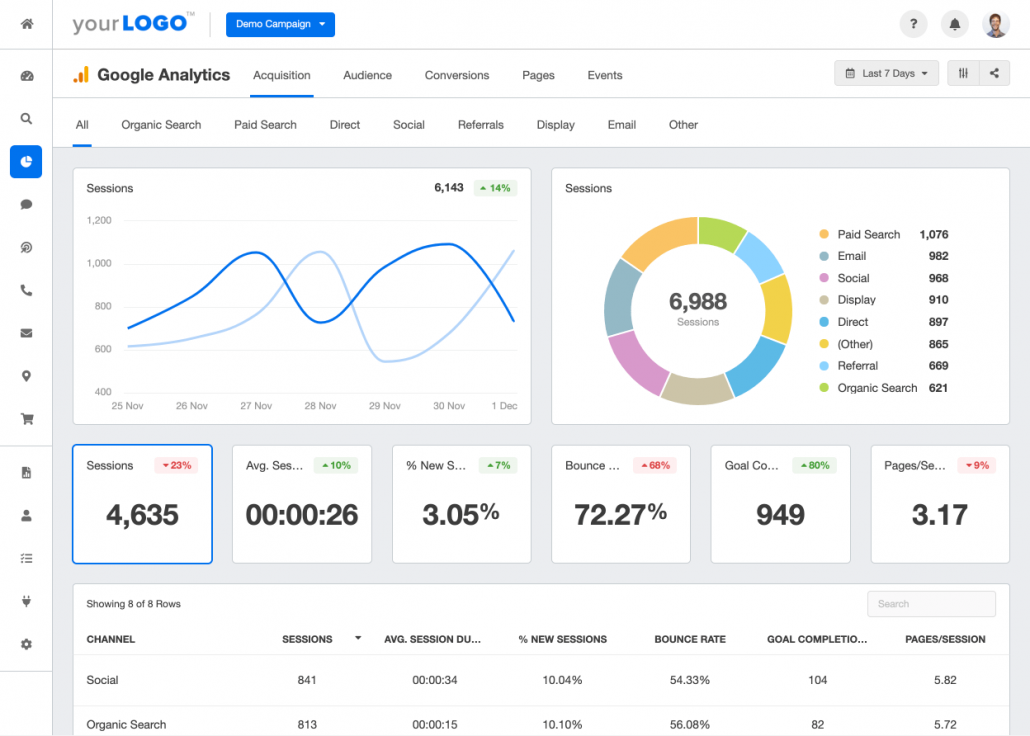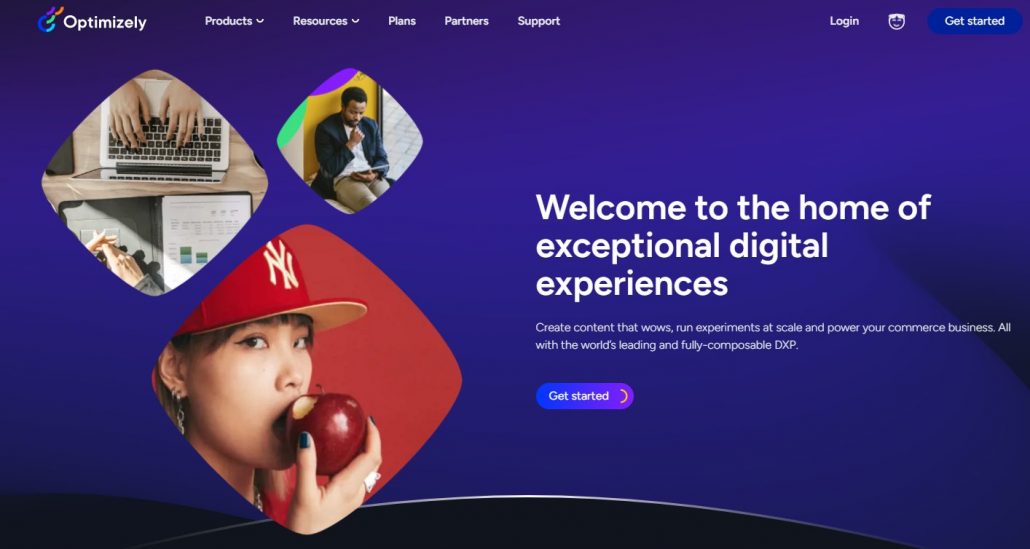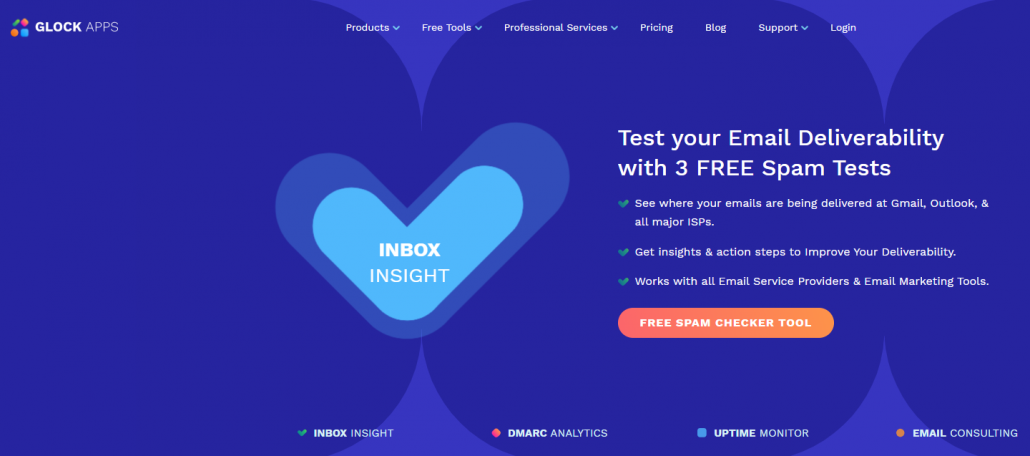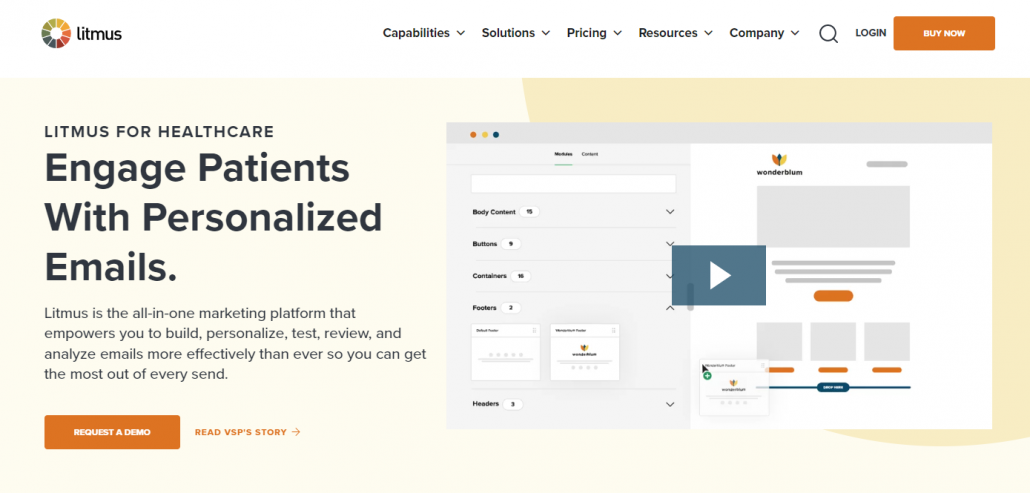Master the Inbox: Unleash Your Email Marketing Life Hack

Looking to level up your email marketing game? Discover the ultimate email marketing life hack that will transform your campaigns and drive remarkable results. In this blog post, we unveil a powerful set of insider tips and tricks that will take your email marketing efforts to the next level.
These email marketing tricks, like most others, are practical and designed to produce results.
Try any of the email marketing tricks on this list if you want to increase your open rate, click-through rate, or conversions.
Why Do We Need Email Growth Hacks, and What Are They?
Email growth hacks refer to strategies and techniques used to rapidly and effectively grow an email list, increase subscriber engagement, and achieve better results from email marketing campaigns. These growth hacks are designed to optimize various aspects of email marketing. Such as list building, subscriber retention, open rates, click-through rates, and overall conversions.
Here are some key reasons why email growth hacks are important:
Increased Reach: Email marketing remains one of the most effective channels for reaching a wide audience.
Targeted Audience: Email allows businesses to communicate directly with their subscribers, who have willingly provided their email addresses and expressed interest in receiving updates.
Cost-Effective: Email marketing is generally more cost-effective compared to other marketing channels.
Personalization and Segmentation: Effective email growth hacks involve segmenting the email list based on various criteria such as demographics, preferences, or purchase history.
Improved Conversion Rates: Email growth hacks often focus on optimizing conversion rates by crafting compelling and persuasive email content, using effective call-to-action buttons, and employing other conversion-focused techniques.
Check out the Email Marketing Hacks below
#1. Craft Irresistible Subject Lines
Crafting irresistible subject lines is a crucial element of successful email marketing. The subject line serves as the first impression and determines whether recipients will open or ignore your email. To make your subject lines irresistible, consider the following strategies:
1. Be Compelling: Grab attention by using compelling language that sparks curiosity or evokes emotion.
2. Keep it Concise: Aim for subject lines that are concise and to the point.
3. Personalize when Possible: Incorporate personalization by including the recipient’s name or other relevant details.
4. Use Action Words: Utilize action-oriented words that prompt recipients to take immediate action.
5. Test and Iterate: Conduct A/B testing with different subject lines to understand what resonates best with your audience.
Crafting irresistible subject lines requires creativity, understanding your audience, and continuous testing. By implementing these strategies, you can increase the likelihood of recipients opening your emails and engaging with your content.
#2. Personalize Your Emails
Tailor your email content to the individual recipient. Use their name, segment your audience based on preferences or demographics, and deliver relevant content that resonates with their interests and needs.
1. Use Recipient’s Name: Addressing your subscribers by their name adds a personal touch to your emails.
2. Segment Your Email List: Divide your email list into smaller segments based on various criteria such as demographics, purchase history, or engagement levels.
3. Leverage Subscriber Preferences: Pay attention to the preferences your subscribers have expressed during the signup process or through their interactions with your previous emails.
4. Behavior-Based Personalization: Monitor how subscribers interact with your emails, website, or previous purchases.
5. Dynamic Content: Incorporate dynamic content into your emails to adapt the content based on individual preferences or user data.
Remember, personalization goes beyond just inserting a name into an email. It involves understanding your audience, leveraging data, and delivering relevant content that speaks to their individual needs and interests. When done effectively, personalization can enhance engagement, build stronger relationships, and drive better results from your email marketing campaigns.
#3. Optimize for Mobile
Optimizing your emails for mobile devices is crucial in today’s mobile-centric world. With a significant portion of email opens happening on smartphones and tablets, it’s essential to ensure your emails provide a seamless and enjoyable experience on smaller screens.
1. Responsive Design: Ensure your email templates are designed to be responsive, meaning they adapt seamlessly to different screen sizes and orientations.
2. Clear and Concise Content: Keep your email content concise and straightforward.
3. Eye-Catching Preheader Text: Utilize the preheader text, the preview snippet that appears next to or below the subject line, to provide a concise and engaging summary of your email’s content.
4. Large and Tappable Buttons: Design your call-to-action (CTA) buttons to be easily tappable on mobile screens. Make them large enough and provide enough spacing around them to prevent accidental taps.
5. Minimize Load Times: Optimize your email’s file size and load times to ensure a smooth experience for mobile users.
By optimizing your emails for mobile devices, you can provide a seamless and enjoyable experience for mobile users, improve engagement rates, and increase the likelihood of conversions from your email campaigns.
#4. Experiment with Timing
Test different sending times to find the optimal window when your audience is most likely to engage with your emails. Consider time zones, industry norms, and your specific target audience to determine the best timing for maximum impact.
Here’s a detailed explanation of how to effectively experiment with timing:
1. Understand Your Audience: Consider the characteristics and preferences of your target audience.
2. Test Different Days and Times: Divide your email list into segments and send your campaigns at various days and times. Experiment with different combinations to assess how the timing affects open rates, click-through rates, and overall engagement.
3. Consider Industry Norms: Research industry benchmarks and best practices for email marketing timing in your specific niche.
4. Analyze and Iterate: Measure the performance of your email campaigns based on different timing experiments. Track metrics such as open rates, click-through rates, and conversions.
5. Consider Lifecycle Stages: Tailor your timing experiments to align with different stages of the customer lifecycle. By timing your emails strategically, you can maximize their impact and relevance.
By experimenting with timing and continuously analyzing the results, you can identify the optimal sending times for your email campaigns. This will help you maximize engagement, increase open rates, and ultimately drive better results from your email marketing efforts.
#5. A/B Test Your Campaigns
Experiment with different elements of your email campaigns, such as subject lines, email copy, visuals, and calls-to-action. Conduct A/B tests to compare the performance of different variations and optimize your campaigns based on data-driven insights.
Here’s a detailed explanation of how to effectively conduct A/B tests for your email campaigns:
1. Identify the Variable: Determine which element or variable you want to test. This could include subject lines, email copy, call-to-action buttons, images, sender names, or even the layout and design of your email.
2. Define the Hypothesis: Formulate a clear hypothesis about how you expect the variable to impact the performance of your campaign. For example, you might hypothesize that a shorter subject line will result in higher open rates.
3. Split Your Audience: Divide your email list into two or more segments, ensuring they are similar in terms of demographics, engagement levels, and other relevant factors.
4. Create Variations: Create two or more versions of your email, with only the variable you are testing being different. Keep the rest of the email content consistent between the variations to accurately isolate the impact of the variable you are testing.
5. Test and Measure: Send each variation to its respective segment of your audience. Track and measure key performance metrics such as open rates, click-through rates, conversions, and any other relevant KPIs.
By consistently conducting A/B tests, you can uncover valuable insights about your audience’s preferences and behavior, allowing you to optimize your email campaigns for better engagement, higher conversions, and overall success.
#6. Segment Your Email List
Divide your email list into smaller segments based on various criteria such as demographics, purchase history, or engagement levels. This allows you to tailor your messages more effectively and improve relevance, leading to higher engagement and conversion rates.
Here’s a detailed explanation of how to effectively segment your email list:
1. Define Your Segmentation Criteria: Determine the criteria or factors you will use to segment your email list. These can include demographics (age, gender, location), behavior (previous purchases, website activity), preferences (interests, subscription preferences), or any other relevant data points available to you.
2. Collect and Organize Data: Gather the necessary data about your subscribers to facilitate segmentation. This may involve collecting information during the signup process, tracking user behavior, conducting surveys, or integrating with customer relationship management (CRM) systems to leverage existing customer data.
3. Analyze and Understand Your Audience: Use the collected data to analyze and understand your audience better. Identify patterns, preferences, and common characteristics among your subscribers.
4. Create Segments: Based on the defined criteria, divide your email list into segments. Each segment should represent a distinct group with similar attributes or interests.
5. Tailor Content and Messaging: Develop content and messaging that speaks directly to each segment’s specific needs and interests.
#7. Use Automation
Leverage email automation to streamline your marketing efforts and deliver timely, personalized messages to your subscribers. Automate welcome emails, abandoned cart reminders, and nurture campaigns to save time and maintain consistent communication.
Here’s a detailed explanation of how to effectively use automation in email marketing:
1. Welcome and Onboarding Series: Set up automated welcome emails and onboarding series to greet new subscribers and guide them through the initial stages of their customer journey.
2. Triggered Emails: Implement triggered emails based on specific actions or events. Examples include abandoned cart emails, post-purchase follow-ups, birthday or anniversary greetings, or re-engagement campaigns for dormant subscribers.
3. Drip Campaigns: Create automated drip campaigns that deliver a series of pre-planned emails to subscribers over time. Drip campaigns are ideal for nurturing leads, delivering educational content, or guiding subscribers through a sales funnel.
4. Personalization and Dynamic Content: Utilize automation tools to personalize your emails based on subscriber data and behavior. By dynamically inserting personalized content, such as names, locations, or product recommendations.
5. List Management and Segmentation: Automate list management tasks, such as adding or removing subscribers based on specific conditions, updating subscriber information, or segmenting your email list.
By incorporating automation into your email marketing strategy, you can save time, deliver highly personalized experiences, and drive better results. Automation allows you to scale your efforts, nurture leads, and engage with your audience in a targeted and timely manner.
#8. Provide Valuable Content
Focus on delivering high-quality, valuable content to your subscribers. Educate, entertain, or offer exclusive insights or promotions that keep them engaged and eager to open your emails.
Here’s a detailed explanation of how to effectively provide valuable content in your email marketing:
1. Understand Your Audience: Gain a deep understanding of your target audience’s needs, preferences, pain points, and interests. Conduct market research, analyze customer data, and engage in conversations to gather insights about what matters most to your subscribers.
2. Segment Your Email List: Segment your email list based on relevant criteria such as demographics, past purchases, or engagement levels.
3. Educational and Informative Content: Share educational and informative content that addresses your audience’s pain points and provides solutions. This can include tutorials, how-to guides, industry insights, best practices, tips and tricks, or relevant news. Position yourself as a trusted source of information in your niche.
4. Exclusive Offers and Discounts: Offer exclusive deals, promotions, or discounts to your email subscribers. Provide them with incentives to remain subscribed and engaged.
5. Curated Content: Share curated content from trusted sources that align with your audience’s interests. This can include articles, blog posts, videos, or podcasts that provide additional value and insights.
By consistently providing valuable content, you can build strong relationships with your subscribers, establish authority in your industry, and drive desired actions. Remember to align your content with your audience’s needs, personalize where possible, and regularly evaluate the effectiveness of your content to ensure it continues to provide value over time.
#9. Optimize Call-to-Action Buttons
Make your calls-to-action (CTAs) stand out by using contrasting colors, clear and concise text, and strategic placement within your email. Direct your subscribers with persuasive CTAs that entice them to take the desired action.
Here’s a detailed explanation of how to effectively optimize your call-to-action buttons:
1. Design and Visibility: Make your CTA buttons visually appealing and attention-grabbing. Use contrasting colors that stand out from the rest of the email design to make the button easily noticeable.
2. Placement and Position: Position your CTA button prominently within the email, ideally above the fold where it is immediately visible without scrolling.
3. Use Compelling Copy: Craft persuasive and action-oriented copy for your CTA button that creates a sense of urgency or excitement. Use action verbs and compelling language that motivates the recipient to click.
4. Mobile-Friendly Design: Optimize your CTA buttons for mobile devices. Ensure they are large, easy to tap, and have enough spacing around them to avoid accidental clicks.
5. Clear Direction: Clearly communicate what will happen when the CTA button is clicked. Set expectations and provide a clear description of the action or destination page the recipient will be taken to. This transparency helps build trust and reduces any potential hesitation.
By implementing these optimization strategies, you can enhance the effectiveness of your call-to-action buttons, increase click-through rates, and drive more conversions from your email marketing campaigns. Regular testing and analysis will help you refine your approach and tailor your CTAs to best resonate with your audience.
#10. Monitor and Analyze Metrics
Some essential metrics to monitor include open rates, click-through rates, conversion rates, bounce rates, unsubscribe rates, and revenue generated. By analyzing these metrics, you can gain insights into the effectiveness of your subject lines, email content, CTAs, segmentation strategies, and overall campaign performance.
1. Open Rates: Monitor the percentage of recipients who open your emails. This metric reflects the effectiveness of your subject lines and helps gauge the initial engagement of your audience.
2. Click-through Rates (CTR): Measure the percentage of recipients who click on links or CTAs within your emails. CTR indicates the level of interest and engagement with your content and helps evaluate the effectiveness of your email copy and design.
3. Conversion Rates: Track the percentage of recipients who take the desired action, such as making a purchase, signing up for a webinar, or filling out a form. Conversion rates provide insights into the effectiveness of your email campaign in driving desired outcomes.
4. Bounce Rates: Monitor the percentage of emails that fail to be delivered to recipients’ inboxes. High bounce rates may indicate issues with email deliverability or the quality of your email list.
5. Unsubscribe Rates: Keep an eye on the percentage of recipients who opt out of receiving further emails from you. Unsubscribe rates can help evaluate the relevance and value of your content and identify potential issues.
By consistently monitoring and analyzing these metrics, you can gain valuable insights into the effectiveness of your email campaigns, identify areas for improvement, and make data-driven decisions to optimize your email marketing strategy.
General Email Marketing life hacks
Few more things to make sure while leveraging your email marketing that is following:
1. Keep your subject lines concise and under 50 characters.
2. Experiment with emojis in subject lines to stand out in crowded inboxes.
3. Write compelling and concise email copy that is easy to skim.
4. Use a conversational tone to make your emails more relatable.
5. Use short paragraphs and bullet points for better readability.
6. Use a single, focused CTA to avoid overwhelming recipients.
7. Insert YouTube shorts
8. Use responsive email templates to ensure compatibility across different devices.
9. Use interactive elements like GIFs or videos to engage subscribers.
10. Include social sharing buttons to encourage subscribers to share your content.
11. Use preheader text to provide additional context or tease the email content.
12. Optimize your email send times based on your target audience’s habits.
13. Use personalization tokens beyond just the recipient’s name, such as location or job title.
14. Include a clear unsubscribe link to comply with email regulations and maintain a clean list.
15. Send a welcome email series to new subscribers to make a good first impression.
16. Use behavioral triggers to send follow-up emails based on specific actions or interests.
17. Incorporate user-generated content into your email campaigns, such as featuring customer photos or reviews.
18. Eye-catching images to celebrities endorsing product
19. Use urgency-driven language and limited-time offers to encourage immediate action.
20. Instant Gift Card, Coupon Codes, Cashback upon buying product with subject line like “Here’s $100 instant coupon for you” – (Just don’t use words that would trigger spam filter)
Useful email marketing tools for analytics, A/B testing, and more…
When it comes to email marketing, having the right tools can significantly enhance your campaign’s effectiveness. Here are some useful tools that can help you with analytics, A/B testing, and more:
1. Analytics Tool: Google Analytics

Description: Google Analytics is a powerful web analytics tool that provides comprehensive insights into your email marketing campaigns. It offers a wide range of metrics and reports, including open rates, click-through rates, conversion rates, and user behavior. With its robust tracking capabilities, you can measure the effectiveness of your email campaigns and make data-driven decisions to optimize your strategy.
Website: Google Analytics
2. A/B Testing Tool: Optimizely

Description: Optimizely is a leading A/B testing platform that allows you to experiment with different variations of your emails. It provides a user-friendly interface to create and manage A/B tests for subject lines, email content, CTAs, and more. With its powerful statistical engine, you can easily analyze test results and identify winning variations that drive better engagement and conversions.
Website: Optimizely
3. Email Automation Platform: ActiveCampaign

Description: ActiveCampaign is a comprehensive email automation platform that empowers marketers to create personalized and automated email campaigns. It offers advanced automation features, such as email sequences, behavior-based triggers, and dynamic content. With its intuitive drag-and-drop editor, you can easily design and automate complex customer journeys to nurture leads and drive conversions.
Website: ActiveCampaign
4. Email Deliverability Tool: GlockApps

Description: GlockApps is a trusted email deliverability tool that helps you monitor and improve your email deliverability rates. It provides detailed insights into factors that affect deliverability, such as spam scores, authentication, and reputation monitoring. With its inbox placement testing, you can check how your emails are delivered across various ISPs and make necessary adjustments to increase deliverability.
Website: GlockApps
5. Email Design and Testing Tool: Litmus

Description: Litmus is a popular email design and testing tool that simplifies the process of creating visually appealing and optimized emails. It offers a variety of pre-designed templates, a drag-and-drop editor, and responsive design features. With Litmus’ comprehensive testing capabilities, you can preview and test your emails across different email clients, devices, and browsers to ensure consistent rendering and maximize engagement.
Website: Litmus
These five email marketing tools are highly regarded in their respective categories and provide valuable features and functionalities to enhance your email marketing efforts. Whether you need analytics insights, A/B testing capabilities, automation workflows, deliverability monitoring, or email design and testing tools, these platforms offer reliable solutions to optimize your campaigns and drive better results.
Conclusion
In conclusion, mastering the inbox and unleashing your email marketing life hack is crucial for achieving success in today’s digital landscape. Throughout this blog post, we’ve explored various key aspects of email marketing, including crafting compelling subject lines, creating personalized content, optimizing deliverability, conducting A/B testing, and utilizing automation.
These strategies, when combined with the right set of tools and resources, can empower you to unlock the full potential of your email campaigns. it is also crucial to be mindful of blacklisted words and take proactive steps to ensure email deliverability. And to know more about blacklisted words and phrases read our article on “Avoid email delivery pitfalls: blacklisted words unveiled“.
Remember, email marketing is a dynamic and evolving field. It requires continuous learning, experimentation, and adaptation to stay ahead of the competition.

Leave a Reply
Want to join the discussion?Feel free to contribute!